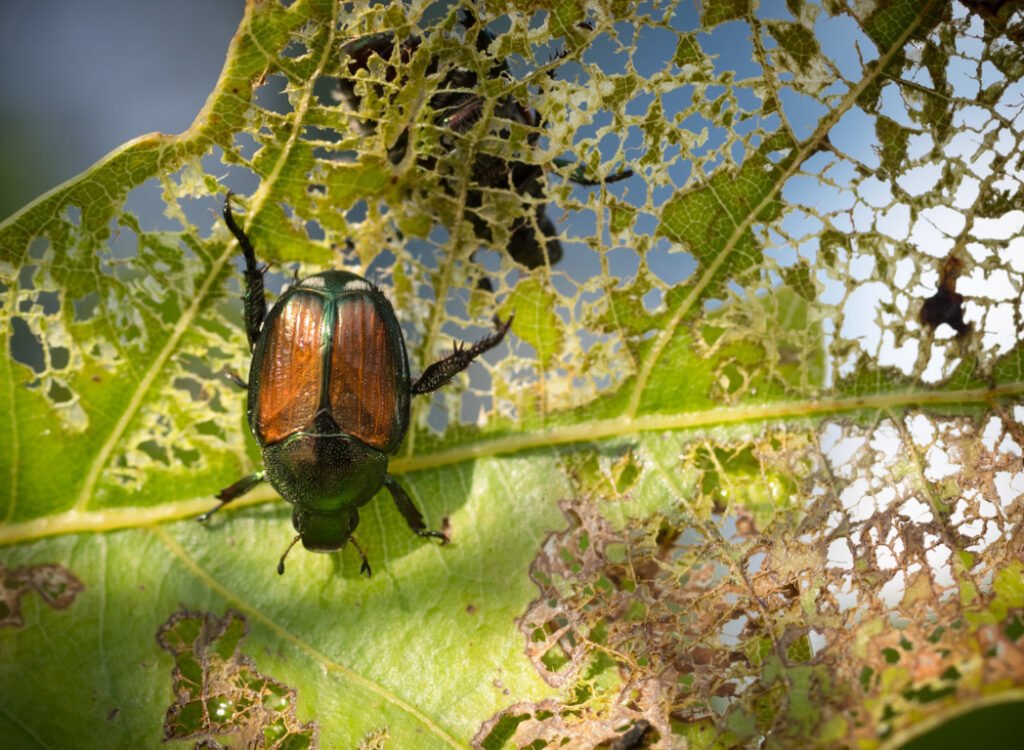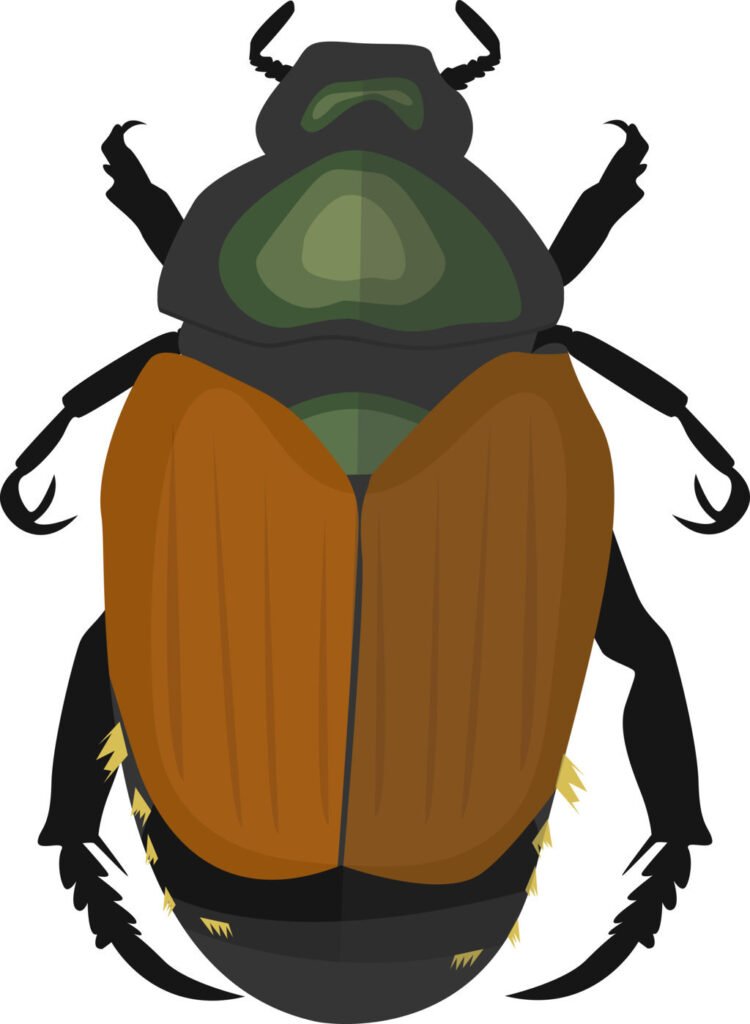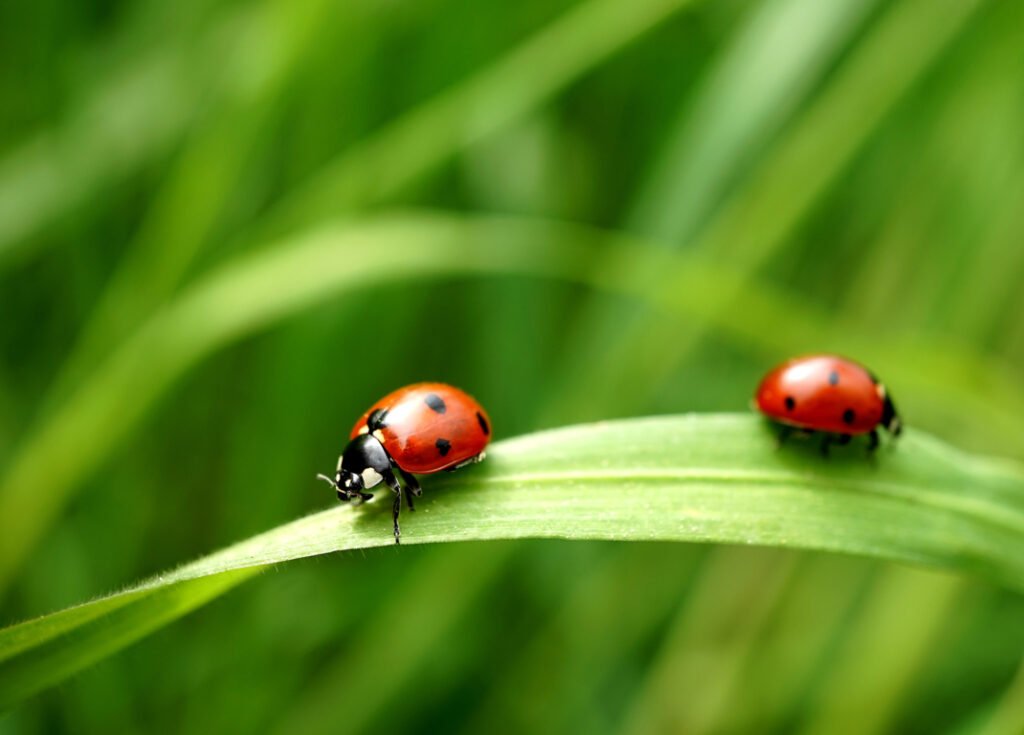

Summertime is my absolute favorite time of year! The sun shining on the grass, birds chirping in the trees, and a gentle breeze all make it feel like perfection. But what’s that? Oh no – it’s a swarm of bugs! As I inspect the garden, it appears to be a battle! Japanese beetles vs June bugs.
I’ve had a pretty good share of encounters when it comes to these two pests.
I remember growing up, whenever I’d be out playing in the backyard, I’d hear the buzz of their wings and feel the gentle thud of their bodies colliding with mine. It was like they were going out of their way to ruin my day.
Keep on reading if you wish to know how Japanese beetles and June bugs affect your garden.
A Tale of Two Garden Pests – Japanese Beetle Grub Vs June Bug Grub
As a green-thumbed gardener, I know the joy and satisfaction of nurturing our precious plants to their full potential. But, just when you think everything’s coming up roses, the Japanese Beetle Grub and the June Bug Grub will throw a wrench in your plans.
Let me tell you, the Japanese Beetle Grub is one pesky critter with a serious case of munching. It wiggles its creamy white body with a brown head all around your garden, gobbling up roots like it’s the all-you-can-eat buffet. I remember one time, I thought I had a healthy patch of grass, but when I lifted up a corner, it was like an underground party – all I saw were grubs a-wriggling!
And then there’s the June Bug Grub, that sly little devil. Don’t be fooled by its early stage as a creamy white grub; it transforms into a dark brown menace that feeds on the roots of your plants and leaves them looking like they’ve been to hell and back. It’s like a chameleon, changing color to hide in plain sight, ready to pounce on your garden at any moment!
But fear not, my friends! We can fight back against these two garden gremlins and protect our plants. By understanding their behavior and habits, we can wage war against these grubs and keep our gardens blooming to perfection. So let’s gear up, grab our gardening gloves, and ready ourselves for battle!
June Bug vs Japanese Beetle: What are the Differences?


You may think they’re similar, but believe me, some key differences between Japanese beetles and June bugs can significantly impact your garden. So, grab your gardening gloves, and let’s dive in!
Size difference:
Let’s start with the obvious – size. Have you ever seen a bug in your garden that looks like a small grape? That’s likely a Japanese beetle. But if it’s more like a raisin, then congratulations, you’ve got yourself a June bug. June is a bit bigger, measuring 0.5 – 1 inches, while the Japanese beetle is smaller, measuring 0.4 – 0.6 inches. So, next time you’re in your garden, see if you can spot the size difference between these two bugs.
Color difference:
Now let’s talk about their fashion sense. The June bug is easily recognizable with its reddish-brown and black body, while the Japanese beetle is a bit more colorful, with a green and copper body and bronze wings. It’s like the Japanese Beetle is dressed for a night out on the town, and the June Bug is ready for a day at the beach. So, next time you see a bug in your garden, check out its outfit to see if it’s a Japanese Beetle or a June Bug.
The time they get active:
These bugs may look alike, but their schedules are completely different. The June bug is a night owl, active at night, while the Japanese beetle is an early bird, active during the day. So, if you hear a buzzing noise in your garden at night, it’s probably June trying to steal a midnight snack. But, if you listen to it during the day, it’s likely the beetle grabbing a quick lunch.
Reproduction:
When it comes to reproduction, the June bug isn’t shy about laying a big clutch of eggs, with numbers ranging from 50-200. Meanwhile, the Japanese beetle is slightly more modest, laying 40-60 eggs. So, if you see a large group of bugs hatching in your garden, it’s probably a June bug invasion. But, don’t worry, a little bug spray will take care of them.
Destructiveness:
Now, let’s talk about the real reason we’re here – destruction. Both the Japanese Beetle and the June Bug can cause damage to your garden, but the extent of that damage can vary. The Japanese Beetle is more destructive as an adult, while the June Bug is still less destructive as both larvae and adults. So, if you see your plants looking wilted and lifeless, it could be either one, but if you see large patches of dead grass, it’s likely the handiwork of the Japanese Beetle Grub.
Scientific classification:
For all you science enthusiasts out there, let’s talk about their scientific classification. The June bug is a proud member of the Genus Phyllophaga, while the Japanese beetle is a part of the Genus Popillia. So, the next time you’re talking to your friends about bugs, impress them by saying, “Did you know the June bug is a Phyllophagan, while the Japanese beetle is a Popillian?”
Number of species:
Finally, let’s talk about their numbers. The June bug has over 900 different species, while the Japanese beetle only has one. So, if you see a group of bugs in your garden and you can’t tell them apart, chances are they’re all Junes.
Diet and behavior:
When it comes to eating, both of these pests have an appetite for plant life – particularly trees, shrubs and flowers. June bugs munch on the leaves, twigs, and petals of common garden variety plants. They also have a fondness for grass which makes them especially bothersome for lawn owners. Japanese beetles, on the other hand, have an affinity for consuming rose bushes, lindens and various fruits – making them a triple threat in the garden.
Despite these similarities, the two species have some very distinct differences in their dietary habits. For example, while June bugs might be content to graze on a single plant all night long, Japanese beetles tend to take more frequent breaks and explore other options before settling down for a meal.
June bug larvae vs Japanese beetle larvae:
In case you haven’t had the opportunity to check out these charming bugs up close, let me give you some background. June bug larvae are white, c-shaped critters that measure about an inch in length and live just beneath the soil surface where they feast on grass roots.
Japanese beetle larvae are slightly smaller than June bugs at around three quarters of an inch and have a more cylindrical shape. These little fellas can be found snacking on grass roots too, but they also enjoy chowing down on the odd root vegetable or two.
The battle for supremacy between these two species can be fierce! As each grub digs deeper and wider in search of food, it comes into contact with its counterpart – leading to a turf war that threatens the health and wellbeing of my garden.
So, which one is considered more dangerous? Well, there isn’t really a clear contender. Both June bug larvae and Japanese beetle larvae are equally damaging to lawns and gardens, so it’s important to be aware of both species when planning your planting strategy.
How to Get Rid of Japanese Beetles and June Bugs in Your Garden
I’ve got some tips on how to get rid of Japanese beetles and June bugs to save your garden from utter destruction.
1. Organic solutions
Let’s start with some organic solutions, because who wants to fill their garden with harmful chemicals, right?
Soap and water solution
One of the simplest and most effective ways to get rid of Japanese Beetles and June Bugs is by using a soap and water solution. Fill a spray bottle with water and a few drops of dish soap and spray it directly on the pests. The soap will suffocate the bugs and kill them on contact. And, as an added bonus, it’s safe for your plants and won’t harm any beneficial insects in your garden.
Neem oil
Another organic solution is neem oil. It disrupts the bugs’ hormone system, stopping them from feeding and eventually killing them. Mix a small amount of neem oil with water and spray it on the pests.

Pheromone traps
If you want to lure the bugs away from your plants, you can use pheromone traps. These traps emit a scent that’s irresistible to Japanese Beetles and June Bugs, drawing them away from your garden and into the trap where they’ll get stuck. Just place the traps far away from your plants, or you’ll attract even more bugs to your garden.
2. Mechanical solutions
Now, let’s talk about some mechanical solutions for getting rid of these pests.
Hand-picking
One of the simplest ways to get rid of Japanese Beetles and June bugs is by hand-picking them. I know, I know, the thought of touching a bug isn’t exactly appealing, but trust me, it’s worth it. Just grab a jar with some soapy water, and go on a bug hunt. When you find one, simply pick it off your plant and drop it in the jar.
Repeat this process until you’ve collected as many as you can. Just be sure to wear gloves, and don’t squish them – it’ll attract even more bugs to your yard!
Row Covers
Another option is to use row covers. These lightweight and permeable covers you place over your plants to keep the bugs out. Just make sure to remove the covers when your plants start to flower, or you won’t be able to enjoy their beauty.
Ladybugs

Finally, you can use the power of Mother Nature to get rid of these pests. Ladybugs are a gardener’s best friend when it comes to controlling Japanese Beetles and June Bugs. They love to munch on these pests, so simply release them into your garden and watch as they do their magic.
Conclusion
I get that Japanese beetles and June bugs are often confused with one another due to their outward similarities. However, the two species have distinct characteristics and behaviors, which I have explained above.
So, if you have any of the two bugs in your garden, causing damage – you now know how to identify which species it is and what action you must take.
That concludes the debate between Japanese beetles vs June bugs – and have one victor! I would like to declare that the winner of this battle is June bugs, as they are less harmful overall.




Pingback: URL
Pingback: ปั่นสล็อต ด้วยสูตรอัพเดตใหม่
Pingback: PGSLOT ค่ายเกมดังลิขสิทธิ์แท้ โบนัสแตกโหด
Pingback: คาสิโนออนไลน์ เกมทำเงิน 24 ชั่วโมง
Pingback: สล็อตออนไลน์เกาหลี
Pingback: thailand tattoo
Pingback: สีพ่นรถยนต์
Pingback: BMW detailen
Pingback: จองตั๋วรถทัวร์
Pingback: เว็บตรงฝากถอนง่าย
Pingback: kc9
Pingback: ยาตราใบห่อ
Pingback: เพิ่มยอดวิว
Pingback: บาคาร่า ufa11k
Pingback: เว็บพนันออนไลน์เว็บตรง
Pingback: altogel
Pingback: แฟนเช่า
Pingback: essentials
Pingback: แพ็คเกจ ดูบอลพรีเมียร์ลีก ais
Pingback: เซ็กทอย
Pingback: clique aqui
Pingback: hiso23
Pingback: แอพเช็คสลิปโอนเงิน
Pingback: exness ดีไหม
Pingback: พรมรถยนต์
Pingback: ซื้อเหล้าออนไลน์
Pingback: สินค้ากิฟฟารีน
Pingback: แบคดรอปผ้า
Pingback: ufa118